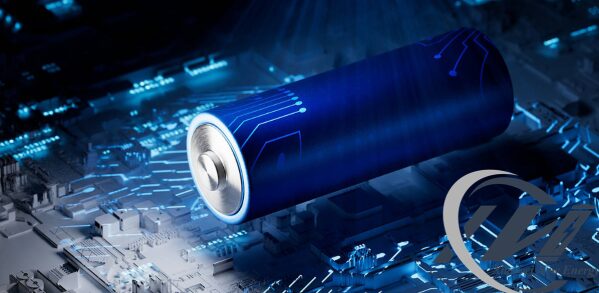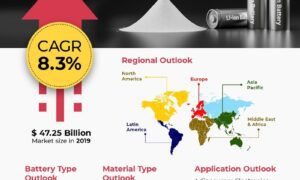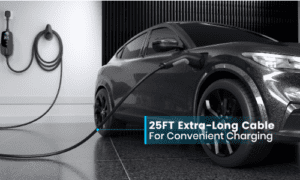1. Industry Overview: Demand-Driven Growth and Technological Evolution
1.1 Global Market: China Dominates, Demand Explodes
The power battery industry is experiencing explosive growth as we approach 2025, The global power battery market size is expected to exceed 1313GWh, This represents an impressive third consecutive year of growth above 30%. Industry observers note China’s commanding position in this expansion, where manufacturers shipped enough LFP batteries last year to power millions of electric vehicles – accounting for nearly three out of every four batteries produced worldwide. Driving this output is China’s rapidly electrifying transportation sector, where electric vehicle adoption continues to accelerate. Current projections suggest the country will register approximately six million new energy vehicle sales in 2025, maintaining its position as both the world’s largest EV market and production hub.
1.2 Technology Landscape: Diversified Development Paths
The battery technology sector is witnessing parallel advancements across multiple fronts, each offering unique advantages:
Solid-State Batteries
The race for solid-state battery supremacy is heating up, with Chinese powerhouses CATL and BYD leading the charge. Industry insiders report these manufacturers have successfully transitioned semi-solid batteries from lab prototypes to commercial production lines – a crucial milestone in battery evolution. While the holy grail of fully solid-state technology remains about three years away from mass vehicle integration, early prototypes already demonstrate game-changing potential. Test results show these advanced cells can store 400 watt-hours per kilogram, effectively packing 50% more energy into the same space compared to today’s best lithium-ion units. This breakthrough could finally address the range anxiety that’s plagued electric vehicle adoption.
Composite Current Collectors
Innovative safety solutions are emerging through composite current collector technology. By depositing copper or aluminum onto plastic film substrates, manufacturers have developed batteries that demonstrate exceptional thermal runaway prevention. These advanced cells have successfully passed rigorous nail penetration tests, a critical safety benchmark in the industry.
Large-Cylinder Battery Cells
The battery technology landscape is witnessing parallel breakthroughs across multiple form factors. Tesla’s innovative 4680 cylindrical cells have crossed the mass production threshold, delivering tangible benefits that are reshaping manufacturing economics. Production line data reveals these larger-format cells enable 30% faster assembly times while trimming material costs by one-fifth – advantages that haven’t gone unnoticed by luxury EV makers. BMW’s engineering teams have reportedly incorporated the technology into their next-generation platforms, while Chinese EV manufacturer NIO plans to feature these cells in upcoming premium models.
Sodium-Ion Batteries
Sodium-ion chemistry is emerging as a viable alternative to traditional lithium-based systems. Backed by government incentives, battery giants like CATL and rising star HiNa Battery are racing to scale up production. Their second-gen prototypes demonstrate surprising capabilities – maintaining stable operation in extreme subzero conditions while offering substantial cost savings. Industry sources indicate several gigawatt-scale sodium-ion battery plants will commence operations before the end of 2025, potentially disrupting the energy storage market. What makes these developments particularly noteworthy is how they’re achieving 200Wh/kg energy densities, a threshold once thought impossible for non-lithium systems.
1.3 Competitive Landscape: Market Concentration and Emerging Players
The battery industry’s competitive dynamics reveal a fascinating dichotomy between established leaders and ambitious newcomers. Two Chinese manufacturers – CATL and BYD – currently dominate the landscape, jointly controlling more than 40% of worldwide battery production. CATL’s remarkable expansion saw its manufacturing output nearly double last year, reaching enough capacity to power approximately 3.8 million electric vehicles. This duopoly isn’t preventing other domestic players from finding success through specialization. Companies like CALB and Gotion High-tech have adopted targeted strategies focusing on specific market segments, while Sunwoda has become the go-to supplier for mobile device batteries, producing enough units last year to equip every smartphone sold in China.
A potentially disruptive development is unfolding in sodium-ion technology. The collaboration between HiNa Battery and China Three Gorges represents a bold bet on alternative chemistry, with their Fuyang production complex set to become the world’s largest sodium-ion battery factory when it comes online next year. This facility’s planned output could fundamentally alter the economics of grid-scale energy storage projects.
1.4 Policy Environment: Subsidy Adjustments and Industrial Upgrading
Policy tailwinds are accelerating the industry’s transformation through targeted financial incentives and strategic roadmaps. A tri-ministerial initiative offers substantial purchase subsidies – up to ¥80,000 per unit – for operators transitioning their bus fleets to new energy vehicles, creating strong economic motivation for fleet modernization. This comes alongside the MIIT’s comprehensive blueprint for advancing next-generation energy storage technologies, which specifically earmarks sodium-ion batteries as a priority development area. The government’s quantified ambition calls for establishing 276 gigawatt-hours of specialized sodium-ion production infrastructure within two years, signaling a clear commitment to diversifying the nation’s energy storage portfolio beyond conventional lithium chemistries. These coordinated policy measures demonstrate how China is leveraging both market incentives and industrial planning to maintain its leadership position in clean energy technologies.
2. Technological Trends: Cross-Disciplinary Integration and Performance Breakthroughs
2.1 Material Innovations: From Single to Composite Solutions
The industry is transitioning from homogeneous materials to sophisticated composites:
Silicon-Based Anodes
With graphite anodes approaching their theoretical limits (372mAh/g), silicon-based alternatives offering 300mAh/g capacity (40% improvement) are gaining traction. One manufacturer’s nano silicon-carbon composite material demonstrates particularly promising performance characteristics.
Solid Electrolytes
Development of oxide and sulfide electrolytes is accelerating. CATL’s sulfide-based solid-state battery has achieved over 1,000 cycles and is expected to enter vehicle applications by 2026.
Lithium Metal Anodes
While theoretically capable of 500Wh/kg energy density, safety concerns remain the primary challenge for lithium metal batteries currently under development by Toyota, Panasonic, and other industry leaders.
2.2 Manufacturing Advancements: From Trial-and-Error to Precision Engineering
AI-Assisted Design: CATL’s implementation of AI algorithms has yielded 50% improvement in simulation efficiency and 30% reduction in R&D cycles.
Extreme Manufacturing: BYD’s blade battery technology employs innovative stacking processes that deliver 50% better space utilization and superior thermal management compared to conventional designs.
3 Market Challenges and Opportunities
3.1 Key Challenges
Battery Raw Materials Supply
Despite some price moderation, lithium carbonate remains elevated at approximately ¥80,000/ton. While sodium-ion batteries offer potential relief from lithium dependence, they cannot fully replace lithium-based solutions in the near term.
Technology Homogenization
Intense competition in mid-to-low end battery segments has led to price wars, compressing profit margins. Chinese lithium battery manufacturers saw gross margins decline 5-10 percentage points in 2024.
Recycling Difficulties
With formal recycling rates below 20%, improper disposal by informal recyclers creates environmental hazards that threaten the industry’s sustainability credentials.
3.2 Growth Opportunities
Energy Storage Expansion
The global energy storage market is projected to reach 220-250GWh in 2025, with China accounting for more than half of installations. Grid-side storage demand is particularly strong, with some lithium battery-based projects demonstrating 40% improvement in peak-shaving efficiency.
Global Market Expansion
Chinese battery manufacturers are aggressively pursuing international opportunities. CATL’s European headquarters in Thuringia, Germany is expected to reach 14GWh production capacity in 2025.
Policy-Driven Development
Government support for sodium-ion battery industrialization is fostering supply chain maturation. Industry analysts project sodium-ion battery costs will decline to ¥0.5/Wh by 2026, achieving parity with lead-acid batteries.
4. Future Outlook: Three Transformational Directions
4.1 Technology Integration: From Single-Function to Energy Ecosystem
Integrated Solar-Storage-Charging Systems
Tesla’s Megapack combined with solar roof installations are creating self-sufficient home energy solutions, with global deployments expected to exceed 10GWh in 2025.
Vehicle-to-Grid (V2G) Technology
BYD’s Han EV supports bidirectional charging capabilities that enable vehicles to supply power back to the grid, significantly enhancing energy utilization efficiency.
4.2 Supply Chain Restructuring: From Fragmented to Closed-Loop Systems
Vertical Integration
CATL has secured upstream lithium resources to achieve over 30% self-sufficiency in lithium carbonate supply, while BYD has established a comprehensive closed-loop system encompassing battery production, vehicle manufacturing, and recycling.
Regionalized Supply Chains
Manufacturers are establishing production bases in Southeast Asia and Europe to mitigate trade risks. Gotion High-tech’s facilities in Germany and the United States exemplify this strategic shift.
4.3 Standardization Breakthroughs: From Chaos to Uniformity
Battery Swapping Standards
The China EV100 is leading efforts to develop unified battery swapping standards expected to cover 80% of vehicle models by 2025.
Recycling Regulations
The Ministry of Industry and Information Technology is drafting comprehensive battery recycling management rules designed to increase formal recycling channels’ market share to 80%.
Conclusion: Battery Materials – The Core Battleground of Energy Revolution
As we stand at the crossroads of technological iteration and industrial transformation in 2025, the battery materials sector has become the decisive arena in the global energy transition. From solid-state battery breakthroughs to the rise of sodium-ion alternatives, from energy storage applications to international expansion strategies, each development trajectory converges on a singular objective: establishing technological leadership in the new energy era.
Chinese enterprises face a critical window of opportunity that extends beyond mere market share competition. Their success will fundamentally reshape the global energy landscape. The coming five years will determine whether the industry transitions from technological follower to pioneer – a transformation that holds profound implications for sustainable development worldwide. With continued innovation and strategic execution, the battery materials sector is poised to deliver on its promise of cleaner, more efficient energy solutions for all.































